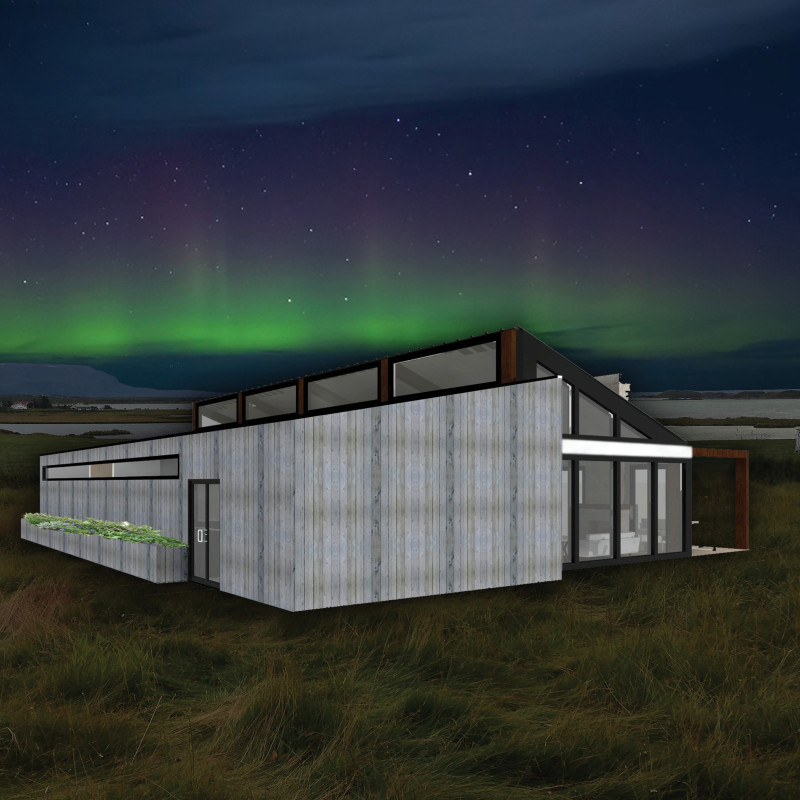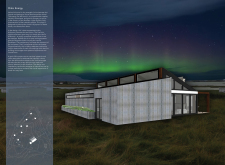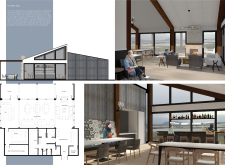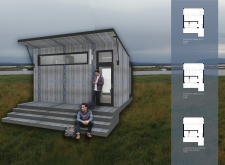5 key facts about this project
The architecture of the project is characterized by a deliberate blend of modern aesthetics and traditional elements that reflect the identity of the area. Its overall form is carefully articulated, balancing light and shadow through strategically placed openings and canopies. The design emphasizes transparency and connection to the outdoors, inviting natural light to filter into the interior spaces while offering residents views of the surrounding landscape. This effective use of glass juxtaposes with robust materials, providing a balance that is both visually appealing and functional.
Key components of the project include [specific key areas, e.g., open communal spaces, individual rooms, and multifunctional areas]. The layout encourages fluid movement throughout the spaces, promoting interaction among users. Common areas are designed to facilitate social engagement, featuring flexible seating arrangements and gathering zones that can adapt to various community events. Private areas are equally well-considered, offering comfort and privacy while maintaining a connection to the larger context of the building.
Materiality plays a central role in the overall design approach, showcasing a range of carefully chosen elements that contribute to sustainability and durability. Concrete forms the backbone of the structure, providing solid support while enhancing thermal mass. Wood accents add warmth and texture, creating inviting interiors that enhance the user experience. Brickwork, reminiscent of the local vernacular, not only speaks to the region’s architectural history but also ensures resilience against the elements. With the incorporation of metal elements, the project reflects contemporary design sensibilities, highlighting precision and craftsmanship.
Unique design approaches within the project manifest in various ways. One notable feature is the focus on sustainability; elements such as green roofs, rainwater collection systems, and energy-efficient installations demonstrate a commitment to environmentally conscious architecture. The building orientation has been carefully considered to maximize natural heating and cooling, reducing reliance on mechanical systems. This focus on sustainability ensures that the architecture harmonizes with the environment rather than competing against it.
Furthermore, the integration of smart technology enhances the overall functionality of the space, allowing for greater control over energy usage, lighting, and security. This incorporation speaks to modern living requirements, ensuring that the architecture caters not just to aesthetic values but also to practical necessities.
As you explore this project presentation, delve into the architectural plans and sections that illustrate the meticulous thought process behind each design decision. Understanding the architectural designs and ideas that inform this project reveals a narrative intertwined with the aspirations of the community and the natural surroundings. This project invites you to engage with its spaces, embodying a physical manifestation of thoughtful architecture that prioritizes user experience, environmental sensitivity, and cultural relevance. For a comprehensive insight into its expression and functionality, take a closer look at the architectural elements presented.


























